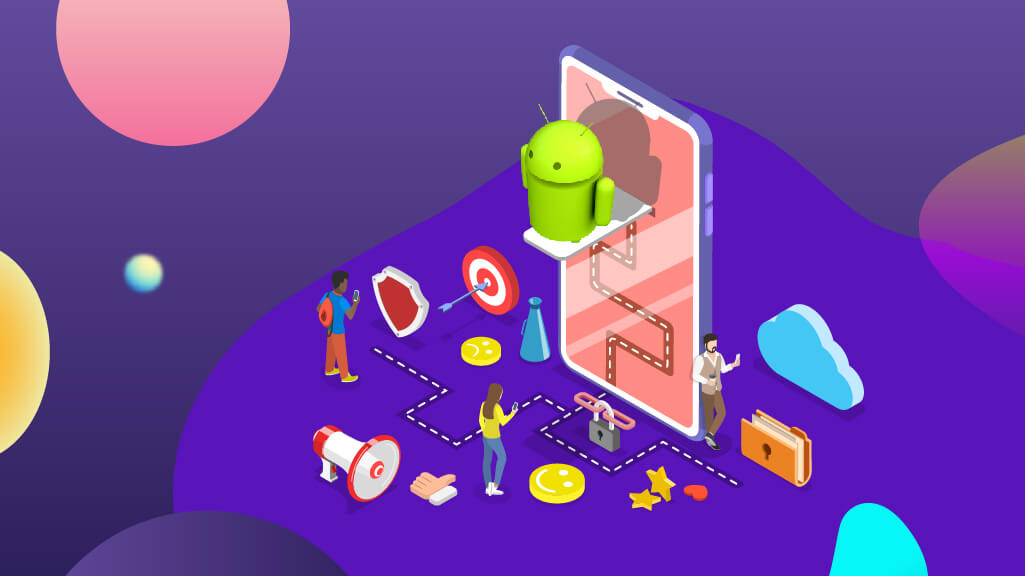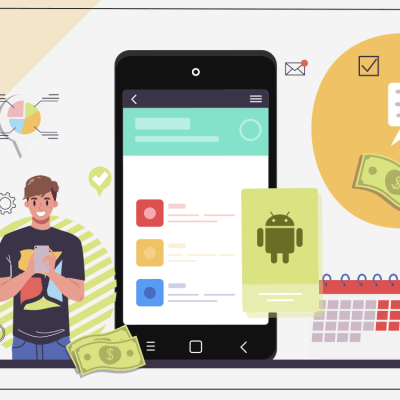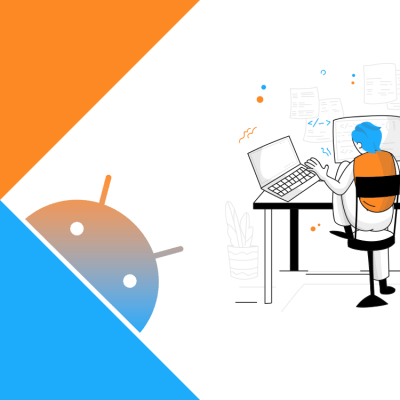[vc_row][vc_column][blog_single_full_content]Developing an android app was never an easy task back in the date and it is not an easy task even now. With practice and experience, android app developers equip the skills to develop complex apps with ease.
But, this doesn’t make the development any easier. There are several challenges in Android mobile application development. One of the biggest challenges with Android is its competition. Google Play Store currently has 2.87 Million apps. This means almost every category and every new idea you think of is already in the Play Store and abundance. This makes it very difficult for Android developers to come up with unique ideas and make an app rank. There are already multiple apps to combat and taking an app in the same category rank high is quite difficult.
This is not the only challenge you might face as a developer while developing Android apps. Let’s jot down other issues of Android development.
1) Software Fragmentation
Different devices run on different operating systems of Android. This makes it difficult for the developers to stay updated with the constant changes. The developer stays updated with the latest version while very few users who are using the latest version of the Android OS. This is one of the major challenges in Android app development. The developers can’t develop apps for the lower version where the majority of the users belong. This results in missing out on a huge part of the target audience. The software fragmentation holds back the users to get the full performance of the apps. It also leads to device fragmentation which leads us to another challenge.
2) Device Fragmentation
Android is an open-source platform that sets it apart from other operating systems. The device manufacturers customize the operating system according to their specific needs. In the case of iOS, there is just one hardware manufacturer, Apple. But, with Android, there are multiple manufacturers and not all of them are equally good to integrate the best features of Android.
Sometimes, the best features don’t work well with certain devices while certain devices don’t support the best versions of Android. Say, for example, two devices supported by the Oreo version. Both can be of totally different in screen size, display, resolution, camera, and other hardware specifications. There are almost 170+ different devices running on this OS with varied specifications. This makes developing android apps a nightmare for the developers. This is why Android developers have to put extra effort to make the user experience rich for the users of every device type and device size.
3) No Defined UI Process
For designing android apps, there is no proper defined set of rules. Hence, most of the developers have to lay down their own standard processes or rules to follow while designing and developing Android apps. When developers come up with a custom user interface by their method, the app’s consistency is not maintained across different devices. Inconsistency in designing and development makes the app creates incompatibility of the app on certain devices. Experienced developers pick the responsive and smart layout to keep the UI consistent for various devices. Also, the mobile application development companies have to test mobile UI in both emulators and actual devices to be sure.
4) API Incompatibility
Android app developers use third party APIs in their app. They use quality APIs and the best thing to use them is the different functionality and interoperability of the mobile app. Designing of certain API depends on certain versions of the Android. Therefore developers are under pressure to come up with a single API to work on multiple versions and multiple devices. Developers always find it challenging to run the app smoothly on all Android devices with the API of the same set.
5) Visibility Challenge
Just like we discussed at the beginning of the blog, Google Play Store has plenty of apps. This makes it very difficult for the newly developed apps to come to the limelight and be visible to the users. Just develop a good app isn’t enough to make it successful. There are plenty of other things to undertake like take care of the search engines. Optimize the app to rank high in the search engine and get in front of the target audience. People are looking for free apps and not the paid ones, so one tip and challenge to keep the app free yet make money from it.
6) Security Issues
Android is open-source which invites more security flaws. Developers and device manufacturers both the parties can customize as per their needs. The more usage, the more people using it and the openness have made this platform more vulnerable to security flaws. Android mobile app development companies will have to work extra hard to integrate robust security measures into the app. They will also need encryption mechanisms tom keep the app secure from the cyber-attacks. Hackers target Android more to get the user’s data their confidential information which makes it a challenge for the developers to invest extra time and effort in making the apps highly secure.
7) Patent Problems
Users have multiple apps to choose from having similar features. Developing apps of the same category with unique features is quite a challenge for Android app developers. Unlike Apple, Google does not have strict guidelines for submitting apps to the Play Store. The lack of quality check gives rise to issues related to the patent. In fact, at times the developers have to change the apps at some later date to avoid the patent issues. Google has taken strong measures for patent-related problems. It makes sure every developer follows it. There is a standard process every developer follows to develop an app and get a patent without any hassle.
8) Marketing Challenges
Designing and developing an app is extremely essential but what’s equally important is marketing it on the right platforms to the right people. There is a high probability of the app failure if not marketed it the right way. Here are some of the things to take care of while app marketing:
- Organic visibility of the app
- User acquisition
- User engagement
- App monetization
Even if the mobile application development company creates an engaging design, develops it perfectly, and tests it flawlessly, it still won’t succeed. If it is not presented to the right audience and goes live without proper marketing, it is likely to fail. An app must go under app store optimization for better visibility, increased traffic, and installs.
Apart from these many challenges, Android application developers still come up with great apps. It is because they have a pre-defined process to follow to create and deploy successful apps in a dedicated timeline.
Android App Development Process
1) Consultation
The first step of the process is proper consultation with the clients. Jumping straight to the development without knowing the exact requirements is one of the biggest mistakes a developer can make. Sit with the client, ask them questions about the app agenda, likes and dislikes, things to do, and things to avoid, features and functionality and expected time to get the app. This helps to deliver the clients exactly what they want and ensures client satisfaction.
2) Wireframe
A wireframe is like a skeleton of the mobile app. Just imagine the developers complete the development of the entire app and the client doesn’t like it. Either the hard work goes in vain or the client remains unhappy. Neither of the situations is good. This is where a wireframe saves the situation. It shows the workflow of the entire app with the basic design. This way if the client needs any modification in the app, it is done in the early stages saving time, efforts, and resources.
3) Designing
The step after the wireframe is designing. The mobile app gets designed as per the client’s requirements. Designers follow the wireframe for the actual design. Once the app gets designed it goes through the client. The clients can verify the design, share the feedback, and suggest any changes if needed. Some of the screens get designed at first for verification and then the rest of them are undertaken.
4) Development
After the app gets designed and approved by the client, it’s time for the mobile application development. All the features and functionalities get integrated into the app. The development of the app goes through a set of stages; integrate the core functionalities first, check if there are any bugs or not. After that, it is time for the minor features to integrate into the app and also check there are no useless features cluttering the app. After that, the minor feature gets tested for any bugs or crash. After this, the app will go into the testing phase to make it ready for the deployment.
5) Testing
When it comes to mobile app testing, it’s good to start testing early and do it more often. The app tests in two ways, manual testing, and automated testing. In the case of manual testing, a bunch of users tests the app and make sure there are no bugs before the launch. In the case of automated testing, the software does the testing instead of people. The testing has to be thorough to save the app from crash, bugs, and failure. At times, mobile app development companies set beta testers, a group of non-tech people to test the app. They use the app and share their feedback about the good and the bad. The app changes based on the feedback
6) Deployment
When the app is ready, pick a day for its launch. Start marketing about the app and get the word out about the launch. This way your app can get potential users right from the start. Deployment is not the end; it’s one of the important things to keep in mind. There are future updates to take care of. Also, the user’s feedback is something to take care of after deploying the app into the Google Play Store.
7) Post-Launch Support
After the app launch, it needs certain changes, maintenance to keep going, the addition of new features as and when needed. Post-launch support covers it all.
FAQs
1) How to choose the best company for Android app development?
There are some points to consider while choosing a mobile app development agency:
- Experience
- Portfolio
- Global presence
- Developers expertise
- Post-launch support
- Which language is best for Android application development?
There are two popular languages Java and Kotlin for developing Android apps. Kotlin is the more advanced, updated and preferred language for developing Android apps.
3) How can I learn Android app development?
The best way to learn android mobile app development is to join a training institute. It’s best to learn under the experts if you are considering it as a career choice.
4) Which languages are used in Android app development?
There are two languages for developing android applications. Java is the older language followed for years while Kotlin is the new language announced by Google as their official language.
5) Which framework is best for Android development?
Here is the list of top frameworks:
- Corona SDK
- Adobe PhoneGap
- React Native
- Ionic
- Xamarin
Final Words
You know the challenges you might face during the course of Android app development. Well, 2020 has been full of challenges and developing Android apps is one of them. Well, there are ways to tackle it. Expert developers will tackle the challenges and come up with a great app.[/blog_single_full_content][/vc_column][/vc_row]






